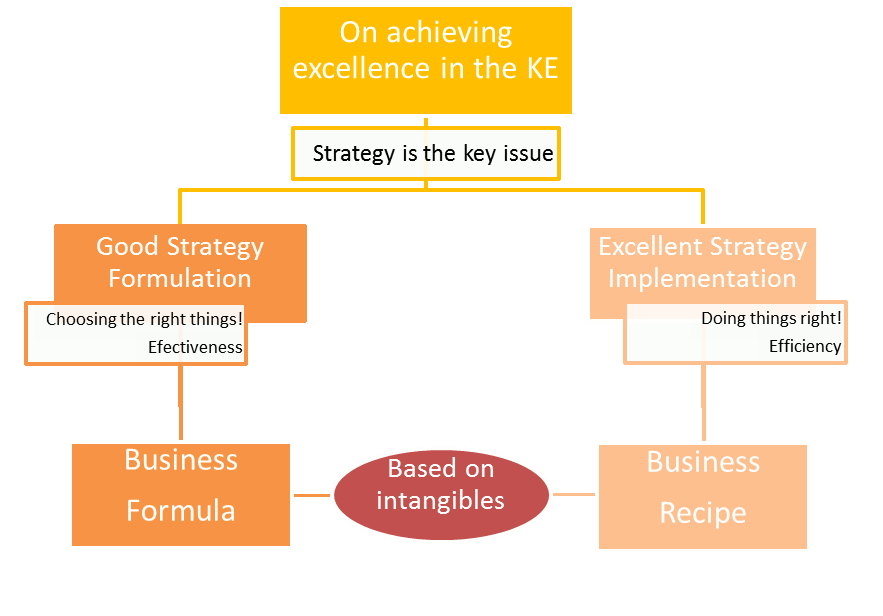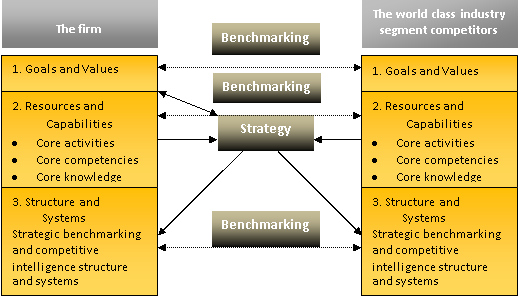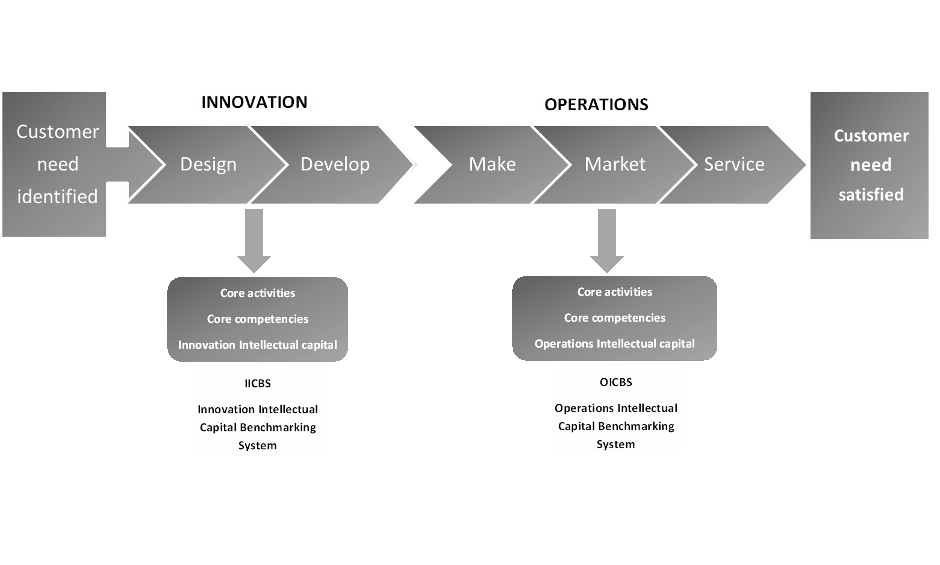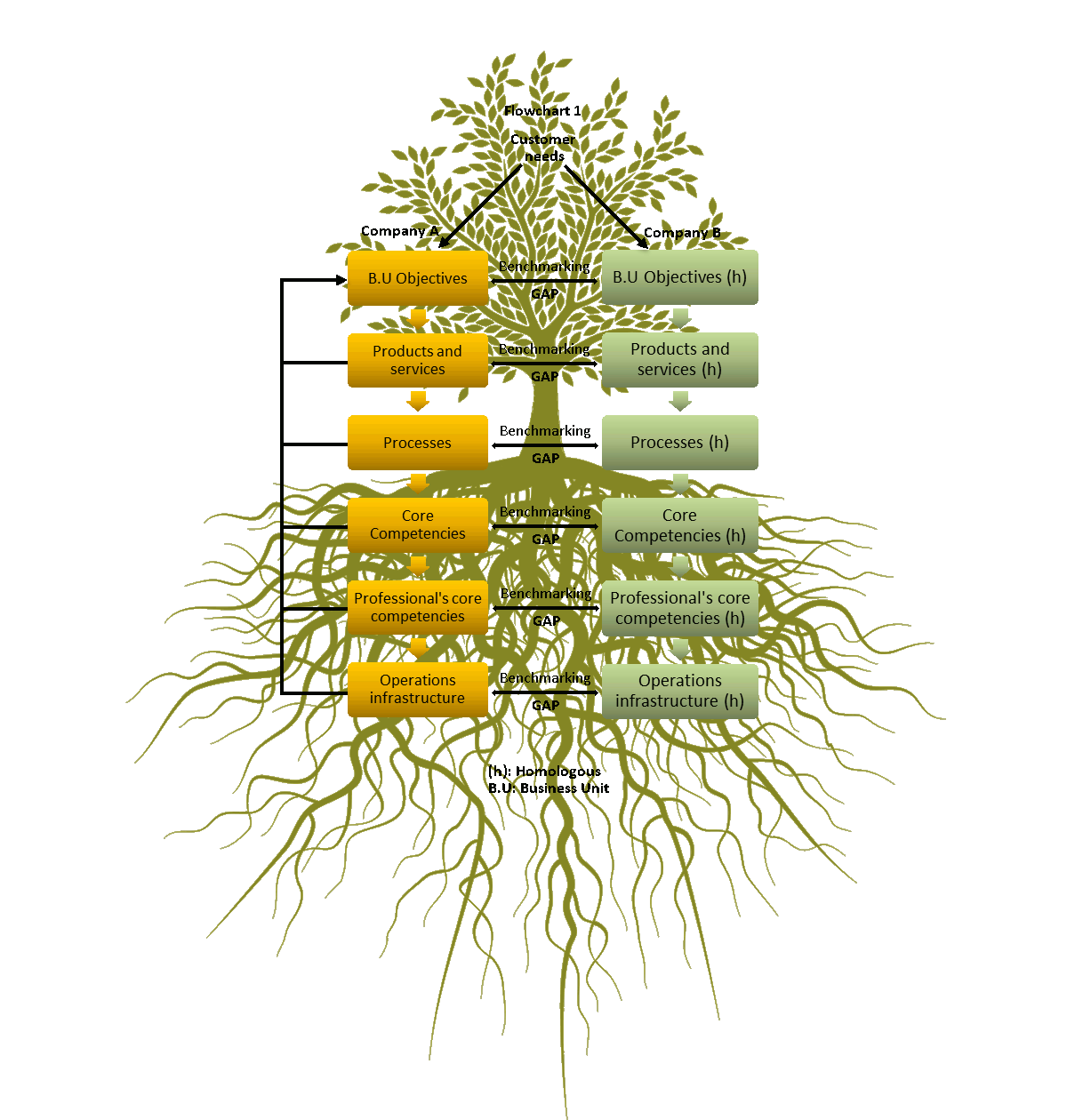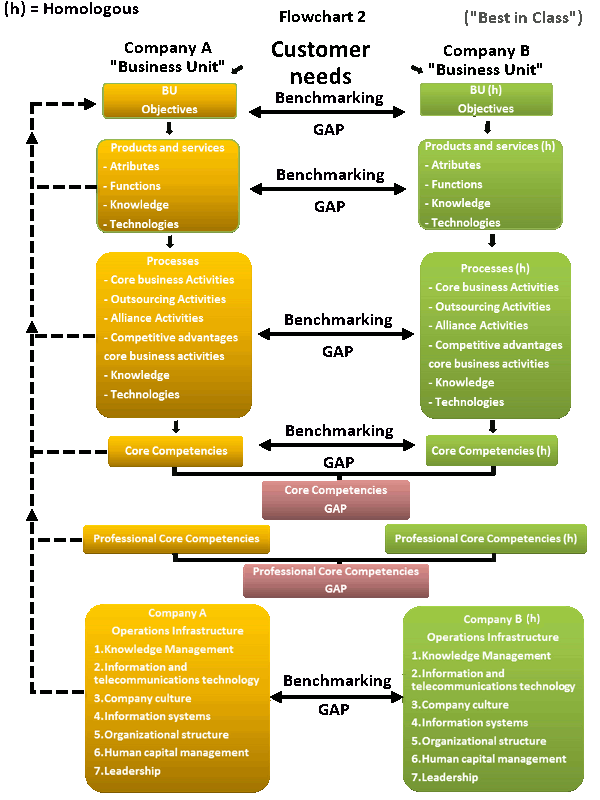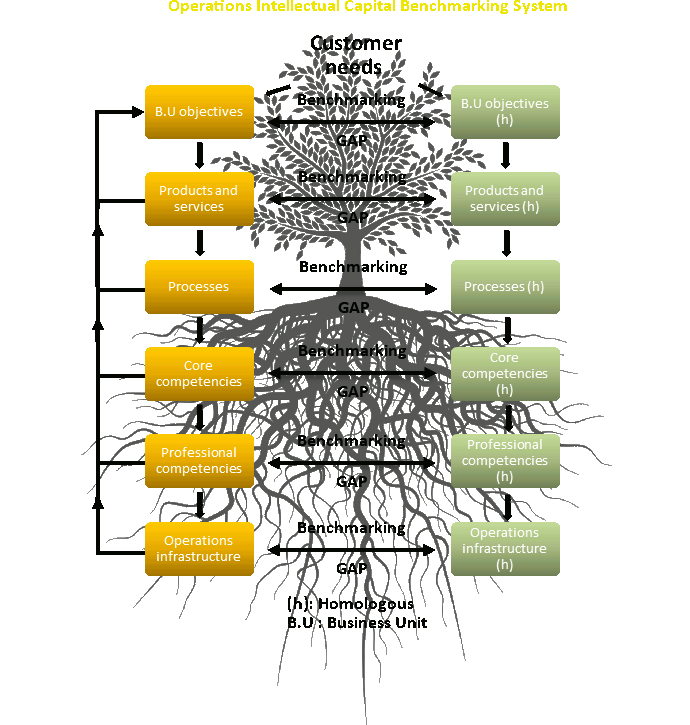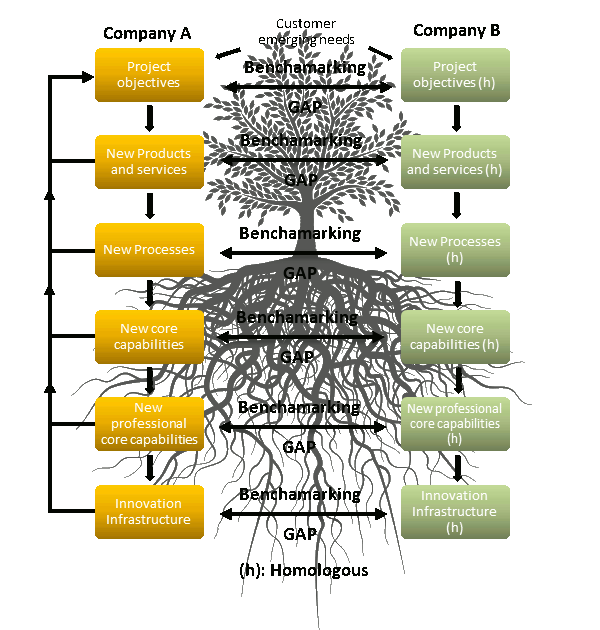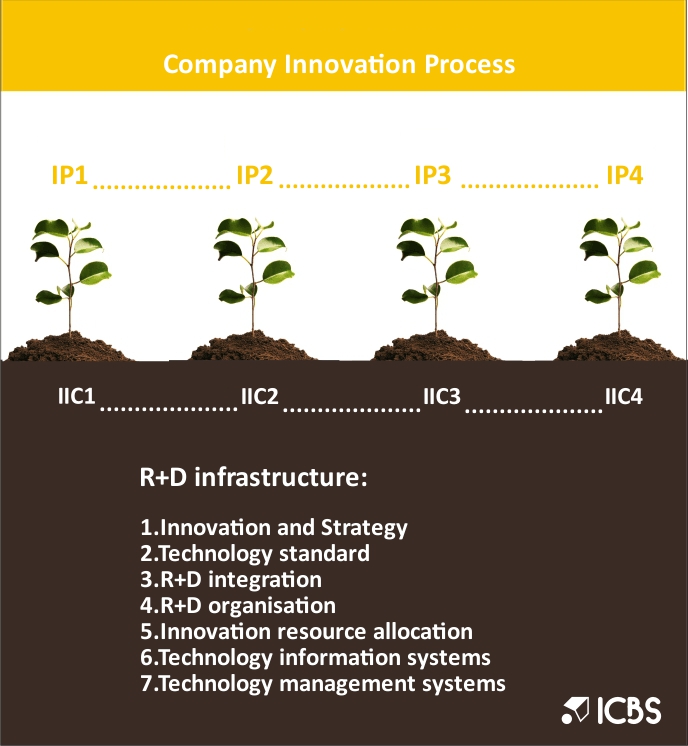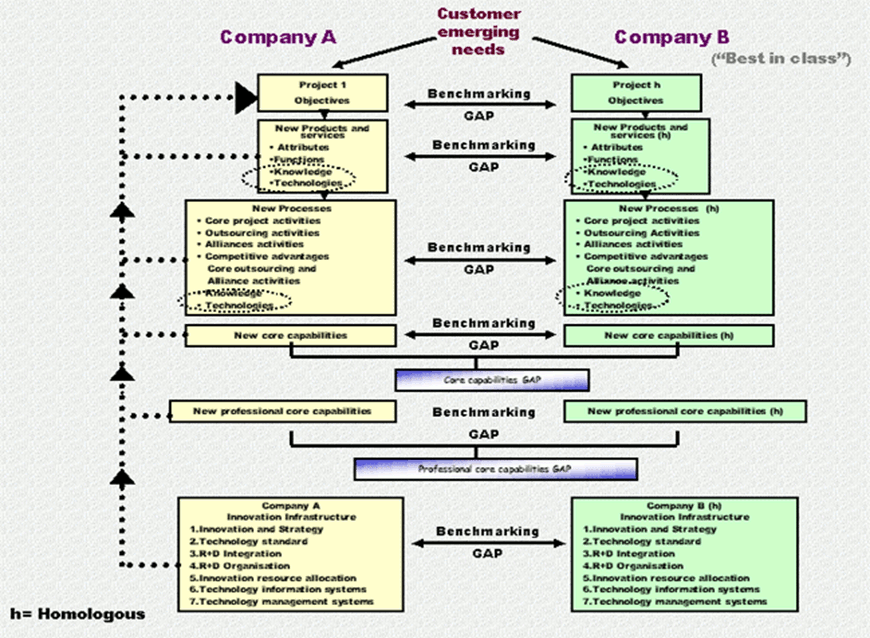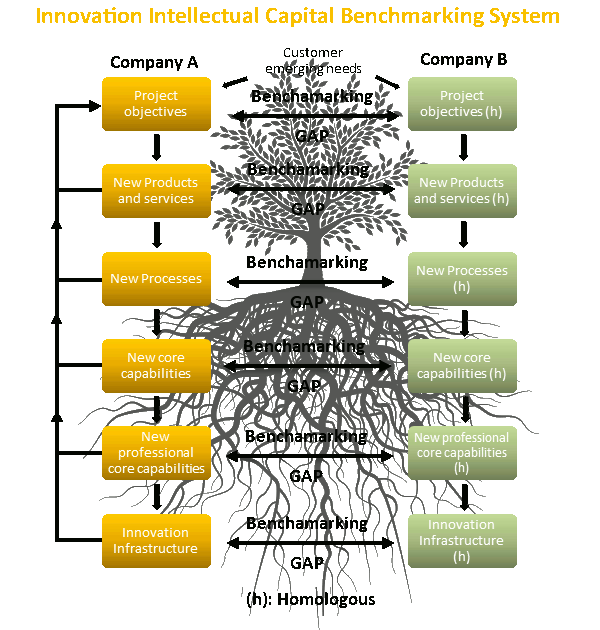
| Methodology | |||||
|
|||||
|
In a developed
market economy, a key common ingredient in all business success
stories has been the presence of a soundly formulated and effectively
implemented strategy. In the new "knowledge economy", an effective
strategy remains paramount. A firm’s success is always the result of
both well-formulated and well-implemented strategies (Grant, 1998).
In this new era, the formulation and implementation of strategy follows different guidelines and criteria. This is best summed-up by saying that strategy in the new era is all about an approach based on resources and capabilities. These vital capabilities are the result of unique combinations of resources (both tangible and intangible) that the company develops when applying their activities and processes to the task at hand. Among these various capabilities, core capabilities are the most relevant, because they represent the main source of sustainable competitive advantage. In our view, these "core capabilities" (or "core competencies") can be equated with the "intellectual capital" of an organisation and, in the turbulent and dynamic environments of today companies therefore effectively compete on the basis of their intellectual capital or their core capabilities in seeking to attain a sustainable competitive advantage. We illustrate how competitive strategies work in the dynamic environments of the modern era. |
|||||
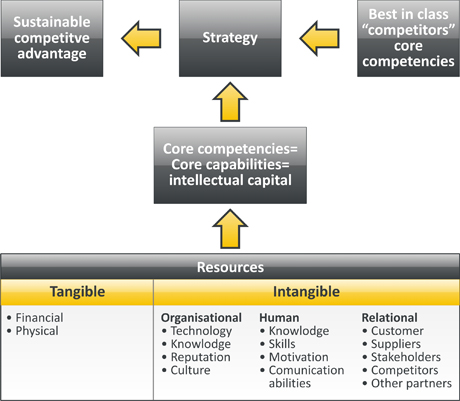
However,
when describing how organizations create and leverage competitive
advantage, we note that it depends upon what the firm has, but no less
important is what the firm does with what it has. In strategy
management, two relevant perspectives still coexist in understanding how
firms deploy scarce resources to create superior value. These two
perspectives are activity-based view and the resource-based view. The
two are complementary. The activity-based view focuses on what the firm
does, whereas the resource-based view focuses on what the firm
has. These two perspectives constitute the foundations of the ICBS
methodologies.
ICBS uses various tools, from which the most relevant are:
Extended SWOT
analysis
Value Chain
Analysis
ICBS considers
the business process value chain broken down into:
ü
Innovation value
chain
The
"innovation value chain"
considers the process of
developing new products and services (and the new processes for
providing them) that subsequently feed the operations process. Many
companies and organisations now base their competitiveness on their
innovation capabilities. In doing so, they are effectively basing
their competitiveness on what might be termed their
"innovation intellectual
capital".
The
“operations value chain”
considers the process of operations producing "ordinary" products
and services through a systematic and repetitive operations value
chain which also requires core competencies and core capabilities to
be competitive. However, these competencies and capabilities are
usually of a different nature from those of the innovation process.
The core competencies and core capabilities of operations can also
be termed "operations intellectual capital".
Thus, the ICBS
considers the business process value chain broken down into its two
constituent parts. The general model of ICBS considers the
innovation process value chain and the operations process value
chain, providing specific methodologies and information systems for
each of the constituent parts
Business process
broken down into its two constituent value chains: The innovation
value chain and the operations value chain
Thus, considering the particularities of each business process, the ICBS methodologies and frameworks can be divided into two partial models. The OICBS refers to operations core activities and core knowledge and the IICBS refers to innovation core activities and knowledge.
OICBS: Operations
Intellectual Capital Benchmarking System
The OICBS is an
operation intellectual capital strategic management methodology.
The OICBS
methodology draws inspiration from the idea of the company as a tree
in which the visible parts of the tree (the trunk, the branches, the
leaves, and the fruits) correspond to the tangible assets of the
company and the invisible part of the tree (the roots of the tree
below ground) corresponds to the intangible assets of the company.
The OICBS
flowcharts show that, within each company tree (or business unit),
separate analyses can be made, in succession, of the leaves and
fruits (the products and services), the branches (the processes),
and the roots (the core competencies and professional core
competencies). For this purpose, ad hoc personalised questionnaires
are used. In addition, the overall soil fertility (the operations infrastructure) can be analysed. Continuing with the idea of a company as a tree, each company business unit can be considered to be a specific tree, and the whole company has as many trees as it has business units. Each of these trees is fed with the knowledge of its roots. Furthermore, a company has at its disposal a common intangible operations infrastructure that is shared by all its business units. This infrastructure corresponds to the fertile soil in which all the company trees are planted. This fertile soil nourishes the roots (core knowledge) of each individual company tree. Company Operations
Infrastructure
This methodology makes it possible to compare each specific tree
(business unit) with the corresponding tree of the best of the
competition, thus facilitating the benchmarking of leaves and fruits
(products and services), branches (processes), roots (core competencies
and professional core competencies), and soil fertility (operations
infrastructure).The benchmarking gap gives the necessary information for
taking appropriate corrective action and for learning from past errors. Benchmarking gaps in OICBS
IICBS: Innovation
Intellectual Capital Benchmarking System
(An Innovation
Intellectual Capital Strategic Management Methodology)
The idea of a company
as a tree is also useful in assessing innovation activities. The
visible parts of the tree (the trunk, the branches, the leaves, and
the fruits) correspond to the tangible innovation assets of the
company. The invisible part of the tree (the roots below ground)
corresponds to the intangible innovation assets of the company.
Flowcharts show that, within each new tree (or innovation project),
separate analyses can be made, in succession, of the leaves and
fruits (the new products and services), the branches (the new
processes), and the roots (the new core competencies and new
professional core competencies). For this purpose, ad hoc
personalised questionnaires can be used. In addition, the overall
soil fertility (the innovation infrastructure) can be analysed.
IICBS Company Innovation Insfrastructure
Continuing with the idea of the new tree, each innovation project can be considered to be a specific tree, and the whole company has as many trees as it has innovation projects. Each of these trees is fed with the knowledge of its roots. Furthermore a company has at its disposal a common intangible innovation infrastructure that is shared by all the innovation projects. This infrastructure corresponds to the fertile soil in which all the company innovation trees are planted. This fertile soil nourishes the roots (core knowledge) of each innovation company tree.
This methodology makes it
possible to compare each specific tree (innovation project) with the
corresponding tree of the best of the competition, thus facilitating the
benchmarking of leaves and fruits (new products and services), branches
(new processes), roots (new core competencies and new professional core
competencies), and soil fertility (innovation infrastructure). The
benchmarking process in IICBS is shown below. Confronted with increasing
global competition, organizations can no longer survive on their own
innovation efforts. To pursue innovation in a global competitive
environment organizations do not have to rely
on internal competencies alone. Innovation
activities are increasingly international and companies
can and should use external ideas as well as internal
ideas. IICBS identifies, audits, and
benchmarks the core capabilities or key intellectual capital that the
company needs to develop and to reach its future goals and successfully
compete with “best in class” competitors.
The benchmarking gap gives the necessary
information for taking appropriate corrective action and for
learning from past errors.
Benchmarking
gaps in IICBS
|
|||||
|
ICBS implementation is carried
out through different workshops that usually coincide with the different
steps of the ICBS structure but, in practice, workshops have to be
organised considering the specific requirements of each particular
business model. |
|||||
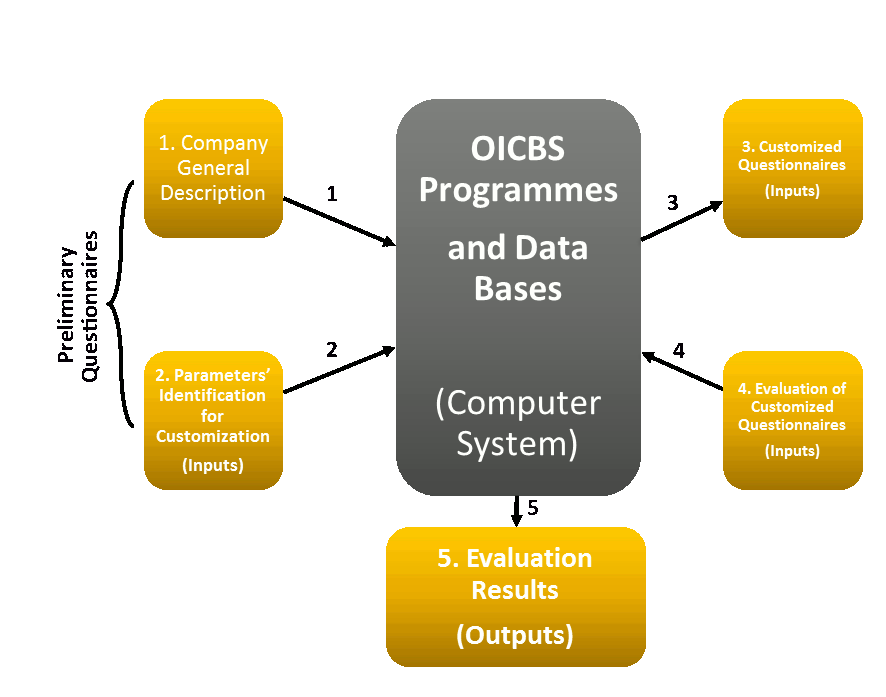
Step 1: Company
General Description
Preliminary
questionnaires have to be filled up to collect the company’s data.
-
General Description
(brief company’s history)
-
Company’s activities
and business units
-
Objectives and global
strategy
-
Balance Sheets Profit
and Loss Accounts
-
Team works
-
Evaluations teams
allocation
-
Sources of
information Step 2: Parameters’
Identification for Customization
Once obtained the preliminary questionnaires, the second phase is to
customize the evaluation. Parameters’ identification will help to
customize final questionnaires (to adapt final questionnaires to the
company’s characteristics).
-
Identification of
competitors
-
Business Units of the
company
-
Competitive gap
-
Products/services to
be benchmarked
-
Products/services
attributes or functions
-
Value chain
-
Team work groups and
sources of information
Based on
information collected in the previous phases, the system generates
customized questionnaires to be filled up by top management, including:
-
Products evaluation
-
Core business competitive advantages
-
Outsourcing competitive advantages
-
Alliances and cooperation agreements competitive advantages
-
Core competencies analysis
-
Personal Competencies
-
Environment evaluation
Once filled up,
information collected through questionnaires will be processed in the
computer.
Final results
comprise the following information:
1)
Summary Results
-
Competencies
benchmarking
-
Key success factors
-
Intellectual Capital
Balance Sheet
-
Precision Indexes
-
Products evaluation
-
Evaluation of value
chain core business activities
-
Evaluation of value
chain outsourcing activities
-
Evaluation of
alliances and cooperation agreements
-
Outsourcing level
-
Evaluation of
competitive environment
-
Core and personal
competencies (summary)
-
Core and personal
competencies (detail) |
|||||

